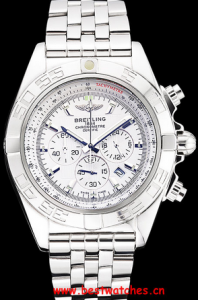
Name:Breitling Chronomat Replica Watches White Dial Stainless Steel Case And Bracelet 622223
Movement: Quartz (Battery)
Quality: Japanese Miyota
Case: Polished stainless steel case
Back: Polished stainless steel snap-in back with Breitling engraving
Bezel: Polished stainless steel bezel with Arabic numeral minute markers
Crown: Large polished stainless steel cutwork crown with a round push-button crown on either side of it
Bracelet: Polished stainless steel link bracelet with logo and Breitling 1884 engraved polished stainless steel push-release clasp
Band Type: Stainless Steel
Sales of Breitling Chronomat Replica Watches declined markedly during the second half of the 1960s. Breitling and its competitor Heuer formed a partnership to develop the first automatic Breitling Chronomat Replica Watches and hoped that its launch would help counteract the downturn. The adventure began in 1965, when the two firms, along with Büren Watch and Dubois Dépraz, signed a contract to develop the watch; they called the venture Project 99. Büren was taken on as movement supplier because of its experience with micro-rotors. No other type of self-winding caliber could permit the rearward and thus service-friendly installation of the specially developed chronograph module because the small oscillating weight didn’t interfere with the two arbors of the elapsed-time counters. Furthermore, the date ring was positioned directly under the dial. Modular architecture also made it possible to install the crown on the left side, where it clearly showed that this was a self-winding watch. Breitling Replica Watches and Heuer (now TAG Heuer) were responsible for the design, the dials, the cases and the other components. The first prototypes of Caliber 11, which ran at 19,800 vph, were available in the spring of 1968. The official launch of the Breitling Chronomat Replica Watches, the world’s first automatic chronograph with micro-rotor, took place simultaneously in Geneva and New York on March 3, 1969. When the curtains rose, the project had already consumed about half a million Swiss francs.